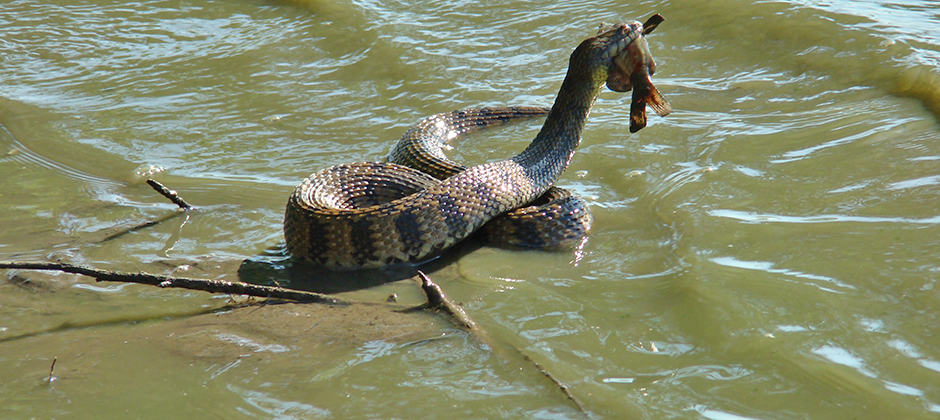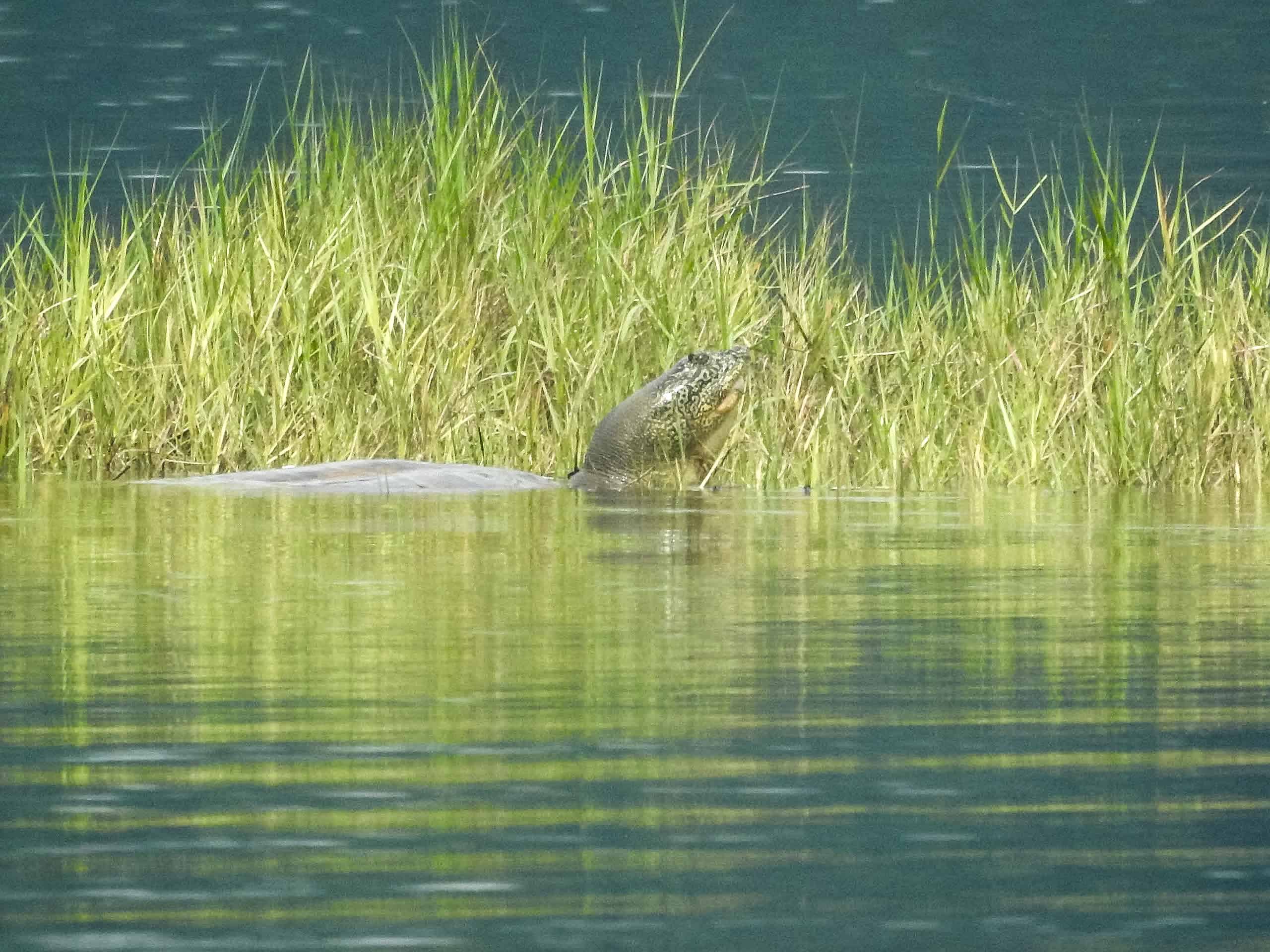Share this article
As invasive watersnakes spread, trapping them is tricky
Over the past decades, common watersnakes have invaded California wetlands, and their range keeps expanding farther and farther south. As this happens, managers worry these nonnatives could affect native species like California’s threatened giant garter snake (Thamnophis gigas).
Managers often use aquatic funnel traps to trap watersnakes, but that can be challenging, said Jonathan Rose, a PhD graduate in ecology from the University of California Davis and lead author of a study recently published in Animal Conservation. Large watersnakes cannot fit in the funnel traps at all. Small snakes can escape.
Rose wanted to see if trapping can be an effective method to drive down common watersnake (Nerodia sipedon) populations despite the inability to catch the biggest and smallest snakes. The key to controlling watersnakes, he found, is to target medium-sized, 1-year-olds, which are the real driver of their population growth. Luckily enough, these individuals can be captured using the funnel traps.
“It was sort of counterintuitive and surprising to us that the survival rate and the growth rate of these younger 1-year-old snakes seem to contribute a lot of population growth,” Rose said. “I think there’s often an assumption that big adult females contribute most to population growth in a lot of wildlife populations.”
Since the watersnakes reach reproductive maturity in three years, “the early life stages do contribute a lot to the population growth rate,” he said.
Using data on common watersnake growth, survival and reproduction, Rose and co-author Brian Todd, a TWS member, created a model to determine which sizes of watersnakes drive population growth and should be the focus of control efforts. Managers use models like these to “get the biggest bang for your buck in trying to control or eradicate a population,” Rose said. Rose and Todd used data from common watersnakes in their native range in the eastern U.S. as well as data from Rose’s own fieldwork on them in California.
The researchers found that watersnake population growth is mostly driven by snakes around a year old, which measure 180 to 350 millimeters in snout to vent length, a measurement from the tip of animal’s nose to the end of its anal plate.
“Trapping does seem to catch enough of the snakes in the early 1-year-old life stage” to impact the population, Rose said. After trapping and removing watersnakes from one California wetland, where he was able to “carpet” the area with traps, Rose saw the trap rate decline as watersnakes were removed from the population, though he said larger wetlands with deeper water may see less success.
Nonnatives like the common watersnake and banded watersnake (Nerodia fasciata), which are native to the eastern and southern U.S., have become common sights in wetlands around California suburbs since the 1990s, Rose said, and some wetlands “are already so heavily invaded that there are very few native species in there, period.” Rose said it’s unknown how exactly watersnakes got to California, but it’s likely they were intentionally brought by people, perhaps as pets that escaped.
As their ranges expand farther south, Rose worries they may begin to have competition or predation impacts on native species, including the giant garter snake, which has one of its strongest population within 12 miles of a common watersnake area near Roseville.
Since the two species are ecologically similar, they would likely compete, he said, so eliminating the common watersnake now could avoid future impacts.
“This might actually be a better time to put in the effort to stop it before it becomes a problem,” he said.
Header Image:
Nonnative watersnakes in California threaten to compete with or predate on native aquatic species.
Credit: U.S. Fish & Wildlife Service-Mountain Prairie Region








